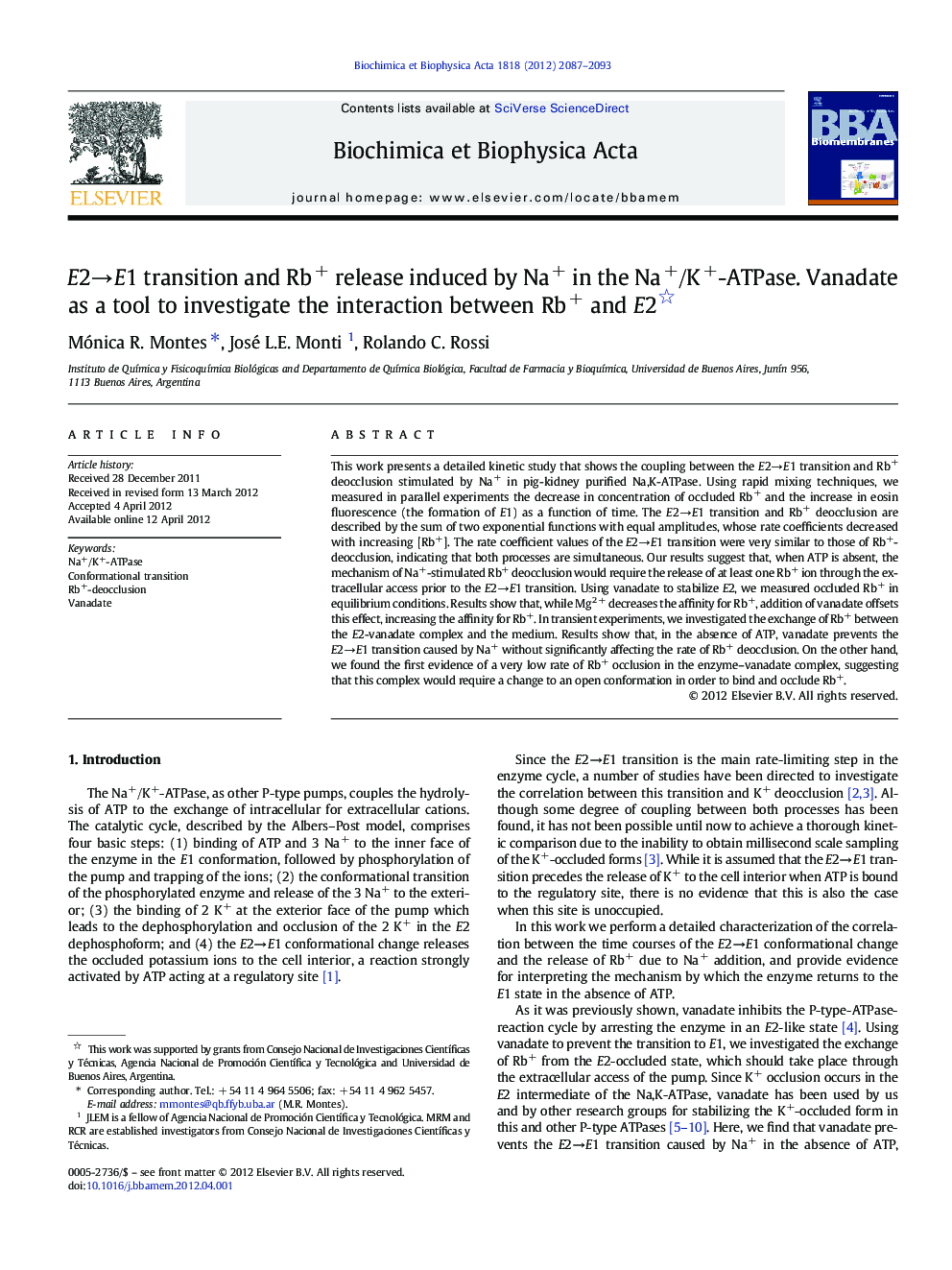| Article ID | Journal | Published Year | Pages | File Type |
|---|---|---|---|---|
| 1944432 | Biochimica et Biophysica Acta (BBA) - Biomembranes | 2012 | 7 Pages |
This work presents a detailed kinetic study that shows the coupling between the E2→E1 transition and Rb+ deocclusion stimulated by Na+ in pig-kidney purified Na,K-ATPase. Using rapid mixing techniques, we measured in parallel experiments the decrease in concentration of occluded Rb+ and the increase in eosin fluorescence (the formation of E1) as a function of time. The E2→E1 transition and Rb+ deocclusion are described by the sum of two exponential functions with equal amplitudes, whose rate coefficients decreased with increasing [Rb+]. The rate coefficient values of the E2→E1 transition were very similar to those of Rb+-deocclusion, indicating that both processes are simultaneous. Our results suggest that, when ATP is absent, the mechanism of Na+-stimulated Rb+ deocclusion would require the release of at least one Rb+ ion through the extracellular access prior to the E2→E1 transition. Using vanadate to stabilize E2, we measured occluded Rb+ in equilibrium conditions. Results show that, while Mg2 + decreases the affinity for Rb+, addition of vanadate offsets this effect, increasing the affinity for Rb+. In transient experiments, we investigated the exchange of Rb+ between the E2-vanadate complex and the medium. Results show that, in the absence of ATP, vanadate prevents the E2→E1 transition caused by Na+ without significantly affecting the rate of Rb+ deocclusion. On the other hand, we found the first evidence of a very low rate of Rb+ occlusion in the enzyme–vanadate complex, suggesting that this complex would require a change to an open conformation in order to bind and occlude Rb+.
► E2→E1 transition and Rb+ release induced by Na+ are coupled processes. ► At zero ATP, Na+-stimulated E2→E1 transition would occur after the release of Rb+. ► Vanadate stabilizes E2 without significantly affecting the rate of Rb+ deocclusion. ► The enzyme–vanadate complex occludes Rb+ with very low velocity.
